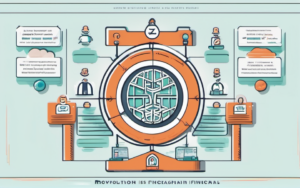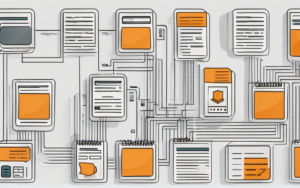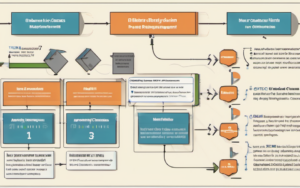The increasing concerns around data breaches and privacy violations highlight the urgent need for robust security measures. Blockchain security offers a groundbreaking solution, revolutionizing how we approach data sharing and protection. Its decentralized and immutable nature provides a level of security unparalleled by traditional methods.
1. Introduction to Blockchain and Secure Data Sharing
1.1 What is Blockchain?
At its core, a blockchain is a distributed, immutable ledger that records and verifies transactions across a network of computers. Think of it as a digital record book replicated across many computers, making it extremely difficult to alter or delete information. Each block contains a timestamp and a cryptographic hash, linking it to the previous block, forming a chain. This interconnected structure is what grants blockchain its unique security features. Understanding this fundamental structure is crucial before exploring its application in secure data sharing.
This technology is not just about cryptocurrencies; its potential extends to various sectors, including healthcare, finance, and supply chain management. Its ability to provide transparent and secure data sharing is rapidly transforming these industries.
1.2 Why Blockchain for Data Sharing?
Traditional data sharing methods often rely on centralized systems, vulnerable to single points of failure and hacking. Blockchain offers a decentralized alternative, distributing data across multiple nodes, reducing the risk of data loss or unauthorized access. The inherent transparency allows for auditable data exchange, fostering trust among participants. This makes it an ideal solution for sensitive data where security and trust are paramount. For example, in healthcare, blockchain can facilitate secure sharing of patient medical records between different providers.
1.3 Benefits of Blockchain in Data Security
The benefits are numerous. Blockchain’s immutability ensures that once data is recorded, it cannot be altered without detection. This eliminates the risk of data manipulation or tampering. Furthermore, the cryptographic hashing and consensus mechanisms add an extra layer of security, making unauthorized access extremely difficult. The enhanced data integrity and transparency offered by blockchain is a significant step forward in improving data security. This is especially important when dealing with sensitive information requiring a high degree of confidentiality.
2. Understanding the Mechanics of Blockchain Data Sharing
2.1 Decentralized Architecture
Unlike traditional databases that reside on a single server, a blockchain’s decentralized architecture spreads the data across multiple nodes in a network. This eliminates the single point of failure vulnerability present in centralized systems. If one node fails, the data remains accessible through other nodes in the network, ensuring data availability and resilience. This is a critical aspect of blockchain security, making it more resistant to attacks.
2.2 Immutability and Transparency
Once data is recorded on a blockchain, it cannot be altered or deleted. This immutability ensures data integrity and provides an auditable trail of all transactions. The transparency of the blockchain also allows authorized participants to view the history of data changes, increasing accountability and trust. This transparency is a key differentiator from traditional systems which often lack clear audit trails.
2.3 Cryptographic Hashing
Each block in a blockchain is linked to the previous block through a cryptographic hash – a unique digital fingerprint. Any alteration to the data within a block would change its hash, immediately making the change detectable. This mechanism guarantees the integrity of the data stored on the blockchain. This sophisticated technique is fundamental to the blockchain’s security architecture.
2.4 Consensus Mechanisms
Consensus mechanisms, such as Proof-of-Work or Proof-of-Stake, ensure the integrity of the blockchain by requiring agreement among network participants before a new block is added. This prevents fraudulent transactions and maintains the overall security of the system. These mechanisms are vital for maintaining the trust and security of the blockchain network.
3. Implementing Blockchain for Secure Data Sharing
3.1 Choosing the Right Blockchain Platform
Selecting the appropriate blockchain platform is crucial. Factors to consider include scalability, security features, transaction speed, and the platform’s suitability for your specific data sharing needs. Public blockchains offer transparency but may compromise privacy, while private blockchains provide greater control but less transparency. The choice depends on the project requirements and risk tolerance. Careful consideration is required to ensure the selected platform aligns with the security goals.
3.2 Designing a Secure Data Sharing System
Careful planning is vital. The system must be designed to address specific data sharing needs, including access control, data encryption, and user authentication. A well-defined architecture ensures efficient data management and enhances the overall security of the system. This step is critical for a successful implementation of blockchain for secure data sharing. The design should encompass a comprehensive security strategy.
3.3 Data Encryption and Access Control
Protecting data at rest and in transit is crucial. Implementing robust encryption methods safeguards data privacy. Access control mechanisms, such as smart contracts, regulate user permissions and prevent unauthorized access. This layered approach minimizes the risks associated with data breaches and ensures data confidentiality. Properly designed access control is essential to mitigate the risks of data leakage.
3.4 Smart Contracts for Data Management
Smart contracts automate data management processes, ensuring efficient and secure data sharing. They define the rules and conditions for data access and transfer, eliminating the need for intermediaries and reducing the risk of human error. These self-executing contracts enhance the security and efficiency of the data sharing process. This automation minimizes the risks associated with human intervention.
4. Case Studies: Real-World Applications of Blockchain in Data Sharing
4.1 Healthcare Data Management
Blockchain offers a secure platform for sharing patient medical records. Using blockchain secure data sharing healthcare, providers can access relevant information while maintaining patient privacy. This improves care coordination and reduces the risks of data breaches. The immutability of the blockchain ensures the integrity of medical records.
4.2 Supply Chain Transparency
Blockchain enhances supply chain transparency by providing a secure and auditable record of product movement. This helps combat counterfeiting and ensures product authenticity. This application showcases how blockchain can improve trust and traceability within complex supply chains.
4.3 Secure Identity Management
Blockchain technology is being used to create secure digital identities, reducing the risks of identity theft and fraud. This system allows individuals to control their personal data and share it selectively with authorized parties. This has significant implications for improving online security and privacy.
5. Challenges and Considerations
5.1 Scalability and Performance
One of the challenges is scalability. Some blockchain platforms struggle to handle large volumes of transactions. Performance limitations can hinder the adoption of blockchain in large-scale data sharing applications. This requires ongoing development of more scalable blockchain solutions.
5.2 Regulatory Compliance
Navigating the complex regulatory landscape is essential. Data privacy regulations, such as GDPR, must be considered when implementing blockchain-based data sharing systems. Ensuring compliance with relevant regulations is crucial for successful deployment. This necessitates a deep understanding of applicable laws and regulations.
5.3 Interoperability and Standardization
Lack of interoperability between different blockchain platforms presents a challenge. Standardization efforts are needed to facilitate seamless data exchange across different systems. This will improve the overall effectiveness of blockchain-based data sharing. The development of industry standards is crucial for widespread adoption.
6. Future Trends and Developments
6.1 Advancements in Blockchain Technology
Ongoing advancements in blockchain technology are addressing scalability and performance challenges. New consensus mechanisms and improved data structures are enhancing the efficiency and security of blockchain networks. These advancements are paving the way for broader adoption of blockchain technology.
6.2 Emerging Use Cases for Secure Data Sharing
Blockchain technology is finding applications in a wide range of sectors, including finance, government, and education. New use cases for secure data sharing are continually emerging, driving innovation and improving data security across various industries. The potential applications of blockchain are vast and continue to evolve.
Blockchain security offers a powerful solution for secure data sharing. Its decentralized, immutable, and transparent nature addresses many of the shortcomings of traditional data sharing methods. While challenges remain, ongoing advancements and increasing adoption are paving the way for a future where data sharing is secure, efficient, and trustworthy.




